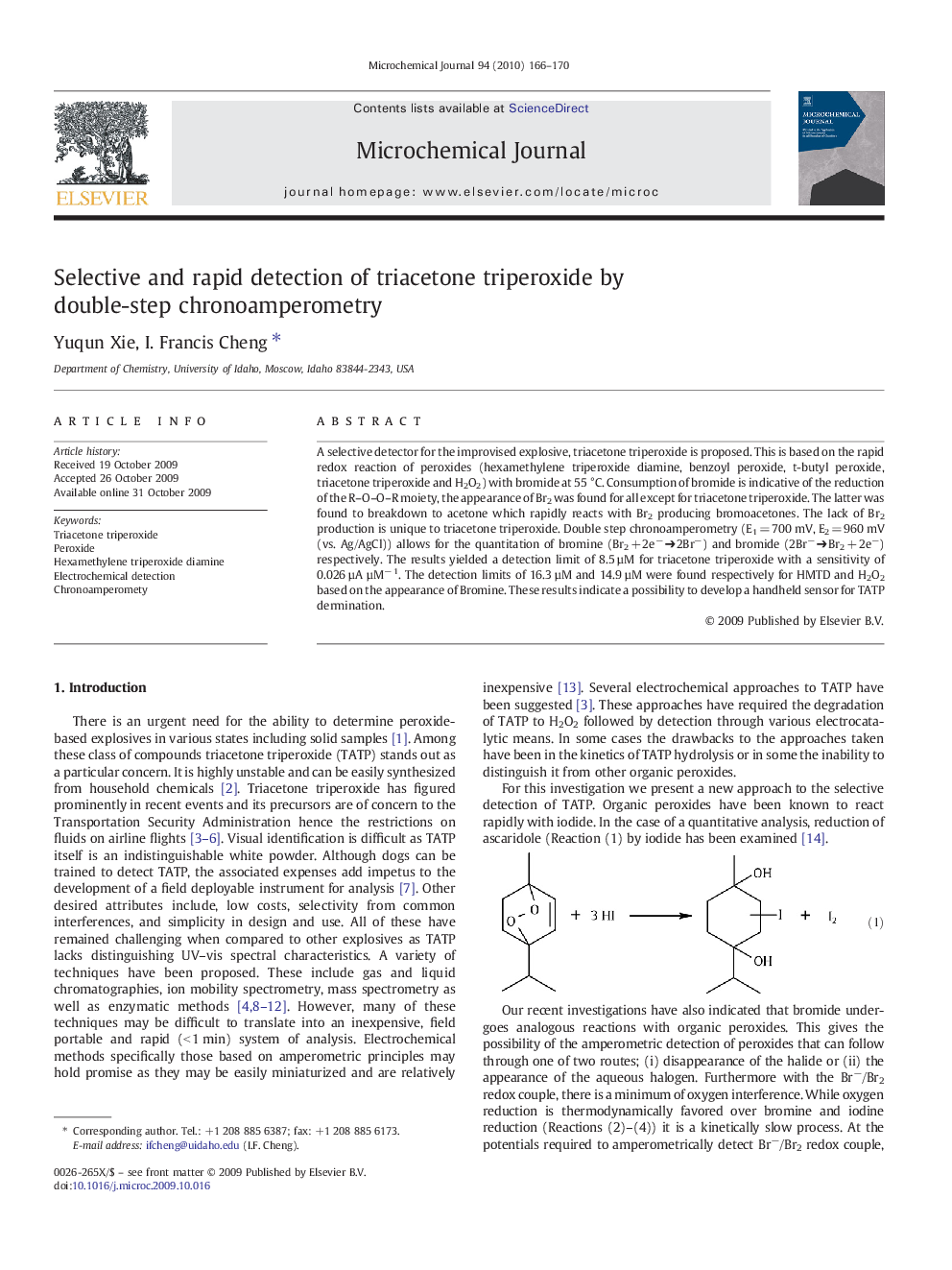| Article ID | Journal | Published Year | Pages | File Type |
|---|---|---|---|---|
| 1228321 | Microchemical Journal | 2010 | 5 Pages |
A selective detector for the improvised explosive, triacetone triperoxide is proposed. This is based on the rapid redox reaction of peroxides (hexamethylene triperoxide diamine, benzoyl peroxide, t-butyl peroxide, triacetone triperoxide and H2O2) with bromide at 55 °C. Consumption of bromide is indicative of the reduction of the R–O–O–R moiety, the appearance of Br2 was found for all except for triacetone triperoxide. The latter was found to breakdown to acetone which rapidly reacts with Br2 producing bromoacetones. The lack of Br2 production is unique to triacetone triperoxide. Double step chronoamperometry (E1 = 700 mV, E2 = 960 mV (vs. Ag/AgCl)) allows for the quantitation of bromine (Br2 + 2e− ➔ 2Br−) and bromide (2Br− ➔ Br2 + 2e−) respectively. The results yielded a detection limit of 8.5 µM for triacetone triperoxide with a sensitivity of 0.026 µA µM− 1. The detection limits of 16.3 µM and 14.9 µM were found respectively for HMTD and H2O2 based on the appearance of Bromine. These results indicate a possibility to develop a handheld sensor for TATP dermination.
